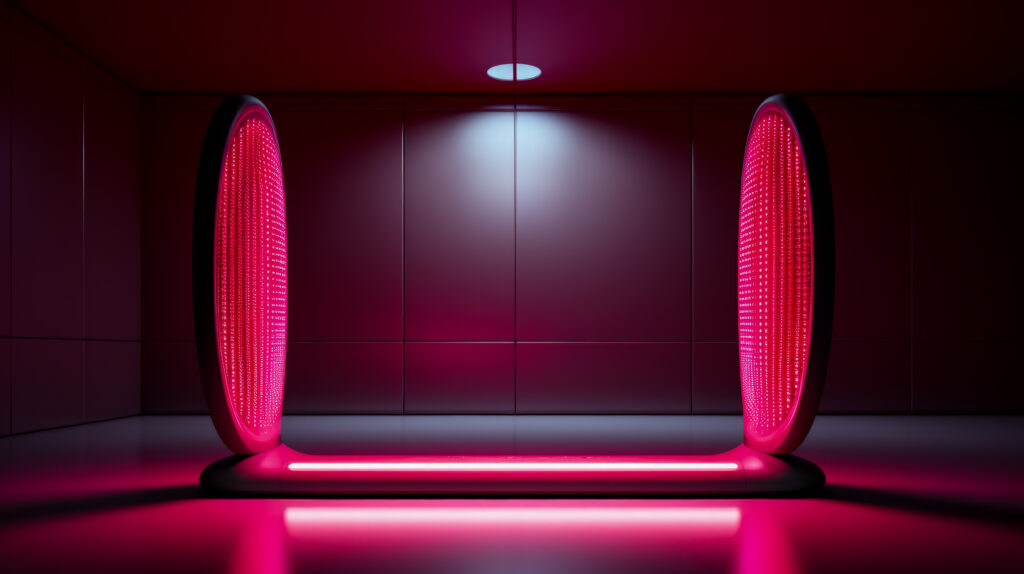
What Are The Differences Between Red Light And Infrared Light Therapy In Pain Relief?
Curious about the contrasting effects of red light and infrared light therapy on pain relief? This article explores the variances between the two methods and their effectiveness in alleviating pain. Whether you’re considering these treatments for chronic pain management or simply interested in the science behind them, understanding the disparities can provide valuable insights into their potential use and benefits. Let’s dive in and uncover the distinctions between red light therapy and infrared light therapy in pain relief.
Red Light Therapy
Definition of Red Light Therapy
Red light therapy, also known as photobiomodulation, is a non-invasive treatment method that uses low-level wavelengths of red light to deliver natural healing and rejuvenation to the body’s cells. This therapy has gained popularity in recent years for its potential health benefits, including pain relief, skin rejuvenation, and improved overall well-being.
How Does Red Light Therapy Work?
Red light therapy works by stimulating the mitochondria, the powerhouse of our cells, to produce more adenosine triphosphate (ATP). ATP is responsible for supplying energy to the cells, promoting their growth and repair. When red light of the appropriate wavelength is absorbed by the cells, it enhances their function, leading to various therapeutic effects.
Benefits of Red Light Therapy
Red light therapy has shown promising results in various areas of health and wellness. Some of the benefits include:
- Pain Relief: Red light therapy has been found to reduce pain and inflammation. It can be used to alleviate chronic pain conditions such as arthritis, muscle strains, and joint disorders.
- Skin Rejuvenation: Red light therapy promotes collagen synthesis, which can improve the appearance of fine lines, wrinkles, and scars. It also enhances blood circulation, leading to a more youthful complexion.
- Improved Sleep: By regulating the body’s natural circadian rhythm, red light therapy can help improve sleep quality and alleviate sleep disorders such as insomnia.
- Enhanced Athletic Performance: Red light therapy has been shown to improve muscle recovery and enhance athletic performance. It can aid in reducing post-exercise soreness and increasing muscle strength.
Potential Risks of Red Light Therapy
While red light therapy is generally considered safe, there are a few potential risks worth mentioning:
- Eye Safety: Direct exposure of the eyes to red light can be harmful. It is crucial to wear proper eye protection or avoid shining the light directly into the eyes.
- Skin Sensitivity: Some individuals may experience skin sensitivity or irritation from red light therapy. It is important to start with shorter sessions and gradually increase the duration to minimize any adverse reactions.

What Are The Differences Between Red Light And Infrared Light Therapy In Pain Relief?
Definition of Infrared Light Therapy
Infrared light therapy involves the use of low-level wavelengths of infrared light to penetrate deep into the tissues, providing therapeutic effects at the cellular level. This therapy has been utilized for its potential benefits in pain relief, accelerated healing, and improved circulation.
How Does Infrared Light Therapy Work?
Infrared light therapy works by delivering heat deep into the tissues, which increases blood flow and enhances the delivery of oxygen and nutrients to the cells. The increase in blood circulation aids in the healing process and reduces inflammation, leading to pain relief and improved tissue repair.
Benefits of Infrared Light Therapy
Infrared light therapy offers several benefits for various health conditions. Some of the notable benefits include:
- Pain Relief: Infrared light therapy has been shown to effectively alleviate pain associated with conditions like arthritis, muscle strains, and joint disorders. The heat generated by the therapy helps to relax muscles and reduce inflammation.
- Faster Wound Healing: The increased blood circulation induced by infrared light therapy promotes faster wound healing by supplying oxygen and nutrients to the injured tissues. It can be beneficial for chronic wounds, post-operative healing, and diabetic ulcers.
- Improved Circulation: Infrared light therapy aids in vasodilation, which widens blood vessels and improves blood flow. This can be beneficial for individuals with circulatory disorders or conditions related to poor blood flow.
- Relaxation and Stress Relief: The heat generated by infrared light therapy promotes relaxation, relieves muscle tension, and reduces stress. It can be a valuable tool in managing stress-related disorders and promoting overall well-being.
Potential Risks of Infrared Light Therapy
While infrared light therapy is generally safe, there are a few potential risks to be aware of:
- Heat Sensitivity: Individuals with heat-sensitive conditions, such as fever or severe burns, may need to exercise caution when undergoing infrared light therapy. The therapy generates heat, which can exacerbate these conditions.
- Skin Burns: Excessive exposure or improper use of infrared light therapy may cause burns or skin damage. It is essential to follow the recommended guidelines and avoid prolonged sessions on sensitive skin areas.

Comparison of Red Light and Infrared Light Therapy
Wavelength
Red light therapy utilizes wavelengths between 630 to 700 nanometers, primarily in the red spectrum. In contrast, infrared light therapy uses wavelengths between 700 to 1200 nanometers, falling in the near-infrared spectrum.
Penetration Depth
Red light has a shallow penetration depth, generally reaching the epidermis and superficial layers of the dermis. On the other hand, infrared light penetrates deeper into the tissues, reaching the subcutaneous layers and underlying muscles.
Targeted Tissues
Red light therapy primarily targets skin cells, promoting collagen production and improving skin health. Infrared light therapy targets deeper tissues, including muscles, tendons, and joints, to provide relief from pain and inflammation.
Treatment Applications
Red light therapy is commonly used for skincare, wound healing, and overall well-being. In contrast, infrared light therapy is often utilized for pain management, muscle recovery, and promoting circulation.
Efficacy in Pain Relief
Both red light therapy and infrared light therapy have shown efficacy in pain relief, albeit through different mechanisms. Red light therapy focuses on reducing inflammation and promoting healing, while infrared light therapy primarily addresses pain by increasing blood circulation and relaxing muscles.
Safety Considerations
When it comes to safety considerations, both therapies have some precautions. In both red light therapy and infrared light therapy, eye protection is essential to avoid potential damage to the eyes. Additionally, individuals with heat-sensitive conditions or sensitive skin should exercise caution and follow the recommended guidelines for therapy sessions.
In conclusion, both red light therapy and infrared light therapy offer unique benefits and potential risks. The choice between the two ultimately depends on the specific health conditions and desired outcomes. It is advisable to consult with a healthcare professional or a qualified therapist to determine the most suitable therapy for individual needs.









